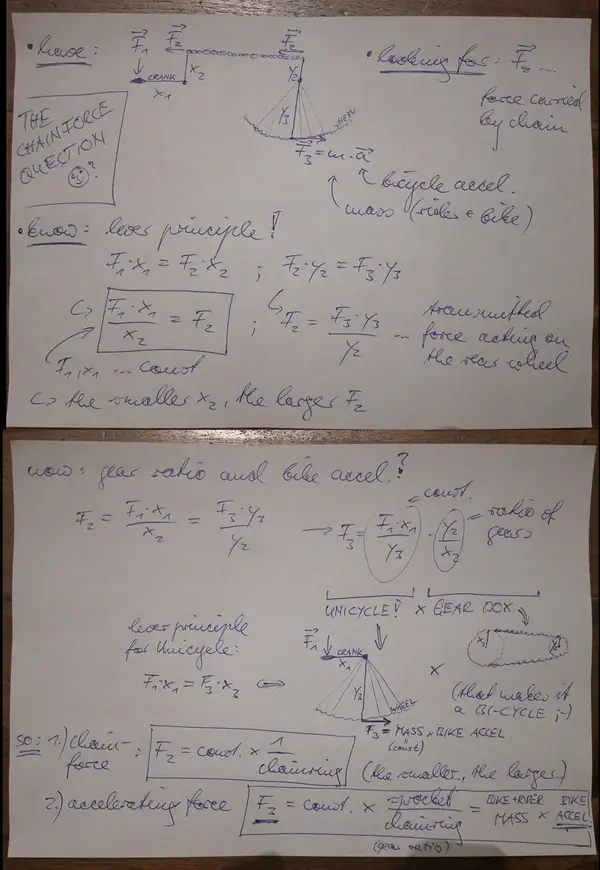supremate
Dirt Disciple
That was a perfect explanation, JamesM 
It's fascinating how much can be said about a thing with a math behind as simple as gtRTSdh has already shown, so may I add some more Btw. reading those mechanical explanations/conversations always remembers me a bit of those antique competitions of how to construct a certain perpetuum mobile...
Btw. reading those mechanical explanations/conversations always remembers me a bit of those antique competitions of how to construct a certain perpetuum mobile...
The solution to the chainforce question has already been mentioned many times, it depends only on the size of the chainwheel. However, I might have found suburban's point to reason differently, i.e. that the chainforce depends on the gear ratio. So I thought I made a little draft to add to the diversity, and I called the forces
F1...riders force on pedal,
F2...chain force and
F3...accelerating force at the rear wheel
and it turns out, that you might see the point of misunderstanding between "chainring size" and "gear ratio", if you somewhat equalize / interchange F2 and F3 in your thoughts.
The torques are the masters of the game, so have fun:
It's fascinating how much can be said about a thing with a math behind as simple as gtRTSdh has already shown, so may I add some more
The solution to the chainforce question has already been mentioned many times, it depends only on the size of the chainwheel. However, I might have found suburban's point to reason differently, i.e. that the chainforce depends on the gear ratio. So I thought I made a little draft to add to the diversity, and I called the forces
F1...riders force on pedal,
F2...chain force and
F3...accelerating force at the rear wheel
and it turns out, that you might see the point of misunderstanding between "chainring size" and "gear ratio", if you somewhat equalize / interchange F2 and F3 in your thoughts.
The torques are the masters of the game, so have fun:
